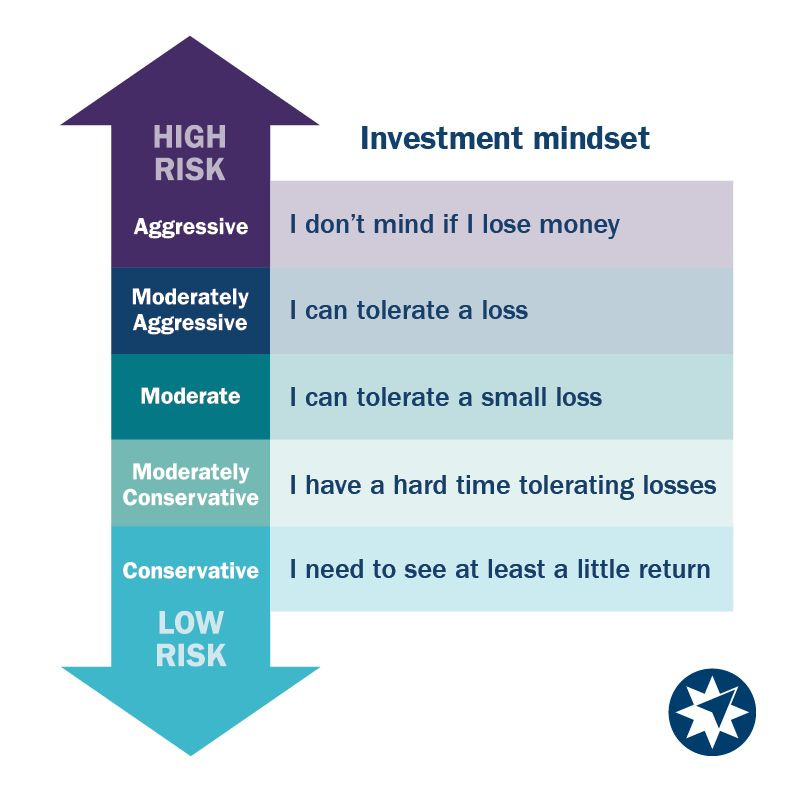In this How to series, I will walk you through the basics of investing. As the series progresses, a more detailed and in-depth understanding will be developed so that anyone can start on the path to becoming a conscious investor with the funds they need.
In the first part of the series, we looked at conscious planning, the importance of saving, and the benefits of saving, i.e., investing.
In the second part, I discussed the most critical steps to starting investing: setting up the system and planning, including conscious attention to investing.
In the previous, third part, I described the most common types of investments.
In this section, we will talk about the risks of investing, how to bear them, and how to manage them.
What is the risk?
Risk is the possibility of not getting the expected outcome or return on investment. It includes losing some or all of the money you invested.
We all face some risks in our daily lives. When it comes to investing, factors like personality, lifestyle, and age play a significant role in determining how much risk you can handle. Every investor has a unique risk profile, which decides their willingness and ability to bear the risk. As investment risks increase, investors usually expect higher returns to compensate for the added risk.
The link between potential risks and returns
One of the primary things to understand in finance is how risk and return are related. If you take on more risk, the potential investment return increases. Risk can show up differently, so investors should be rewarded for taking more risks. For example, investing in a U.S. Treasury bond is one of the safest investments. However, compared to a corporate bond, it provides a lower rate of return. Because corporations are more likely to go bankrupt than the U.S. government, the risk of investing in a corporate bond is higher. So, investors get a higher rate of return to compensate for that risk. You can use different strategies to manage risk if you're an investor. For instance, diversification and derivative positions are some of the methods you can use to hedge risks.

Types of risks
Market risk denotes the likelihood of incurring losses on investments owing to fluctuations in the economic environment or other events that affect the overall market. The three primary categories of market risk are equity risk, interest rate risk, and currency risk. Equity risk pertains to shares, while interest rate risk applies to debt investments like bonds. Currency risk, on the other hand, is associated with foreign investments and exchange rate fluctuations.
Liquidity risk refers to the possibility of being unable to sell an investment at a reasonable price when you need to retrieve your money. Sometimes, you might have to sell the investment for a lower price. But there are some investments, like exempt market investments, that you can't sell at all.
Putting all your money into one investment or type is not a good idea. One way to reduce the risk of losing money is to spread your investments across different types, industries, and locations. This will help you avoid losing all your money in one fell swoop.
When investing, one thing to worry about is the risk of inflation reducing your investment's value over time.
Sometimes unexpected events, such as losing a job, can shorten your investment period, called horizon risk. This could lead to selling your investments earlier than planned, and if you do so during a market downturn, you may lose money.
Investing in other countries carries foreign investment risks not present in France, such as nationalizing companies in emerging markets.
Investor Risk Profiles
How much risk someone is willing to take and bear depends on their risk profile. To determine the risks one can take, you must see if they have more assets than liabilities. Those with many assets and few liabilities can bear more risks than those with fewer assets and more liabilities.
People with enough funds for retirement, emergency savings, insurance coverage, savings and investments, and no personal loans or mortgages are likely to be highly able to take risks. But if they have these assets, they can bear many risks.

Sometimes, people's willingness to take risks differs from their ability to take risks. For example, someone with many assets and few liabilities can still be conservative and avoid taking risks. That's why the portfolio has to be constructed accordingly.
How to manage the risks?
Risk management is a way to reduce your losses. There are different techniques to do that. One of them is called "Avoidance." It's like playing it safe, choosing the safest option with little to no risks. Another technique is "Retention," where you accept and prepare to deal with the risks. "Sharing" is when two or more parties take on a risk together. For example, insurance companies share risks with reinsurers. "Transferring" is another technique for moving risks from one party to another. For instance, health insurance transfers the risk of coverage from you to your insurer as long as you pay your premiums. Finally, "Loss Prevention and Reduction" aims to minimize losses instead of entirely eliminating the risk. Investors take on higher risks to achieve higher returns. That's why the riskier the security, the more volatile it can be. Usually, if the stock market fluctuates more than one percent over time, it's considered volatile.
Why do I need to manage the risks?
Effective risk management is essential to the investment and financial realm. It demands investors to proactively identify, thoroughly analyze, and make critical decisions about the likelihood of achieving their objectives. By prioritizing risk management while minimizing or effectively coping with any associated losses, individuals can confidently work towards their goals.
In the long term, knowing the potential risks of investing and how to manage them is essential for achieving returns and capital security.
The Super Stocks Newsletter is provided for general information only. It should not be construed as an invitation or offer to purchase or sell any financial instrument, nor should it be considered a recommendation for any investment. More: Disclaimer




